Creating a Splunk connection
Create the connection by using one of the following methods:Splunk Cloud users:Your
Splunk Domain is the deployment name associated with your generated token. It can be found in the URL on the Generate Token page and is not necessarily the same as your Splunk instance name.
The correct format is: https://{deployment-name}.splunkcloud.com.You must be logged into the Splunk domain before any external API connections
can function.
Each action on our platform supports different authentication methods based on
Splunk’s requirements. Most actions support the API Token and Username &
Password methods, while some actions require an HTTP Event Collector Token
and therefore only support the HTTP Event Token method.
Before you can access your instance via Splunk’s API, you must add Blink’s public IP addresses to the Search Head API Access and IDM API allow lists. Please refer to Splunk’s Guide for more details. If you prefer configuring the IP’s via Splunk Web, please see Configure IP allow lists using Splunk Web.IPs to add to the allow lists:
| IP |
|---|
| 44.194.139.218 |
| 3.217.19.166 |
| 54.81.101.61 |
| 107.20.97.38 |
Using API Token
To create the connection you need:- A Splunk Domain
- A Deployment API Port
- An API Token
Obtaining the API token
-
In the system bar, click Settings.

-
Click Tokens.
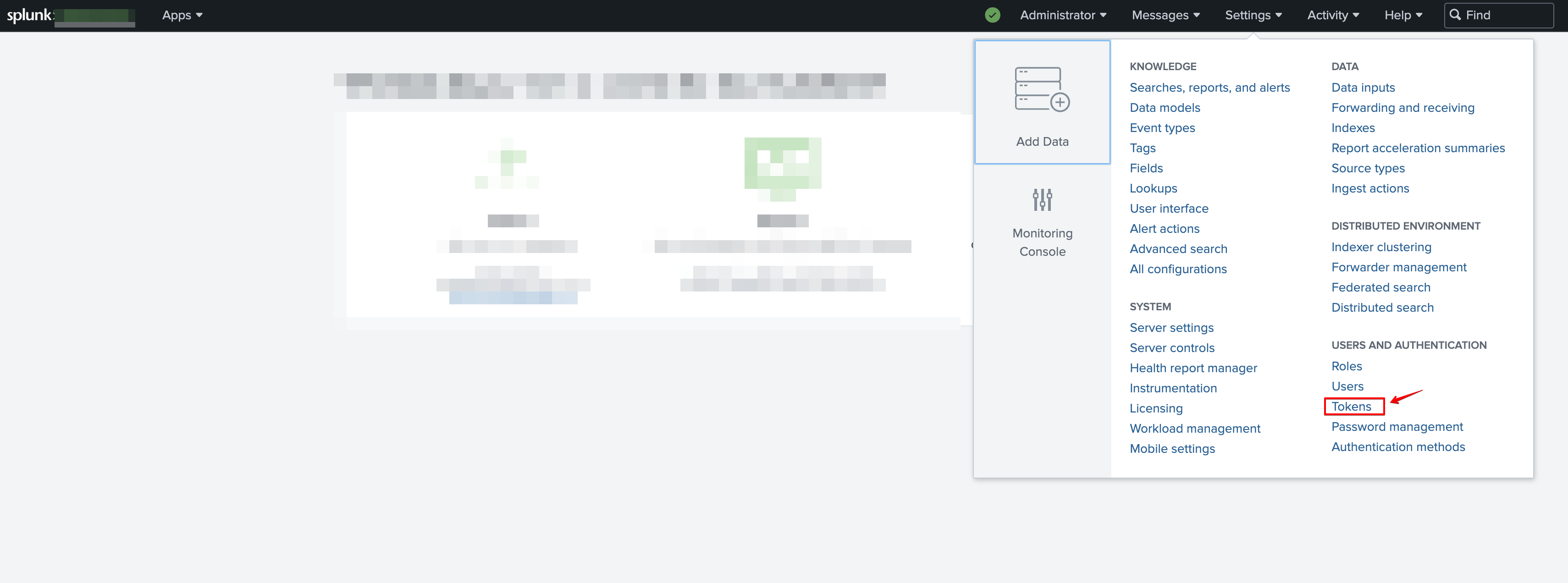
-
Click New Token.

-
In the New Token dialog, fill the required details. Pay attention to the
Expirationfield, if you won’t specify it, the token will expire within a month. When finished, click Create.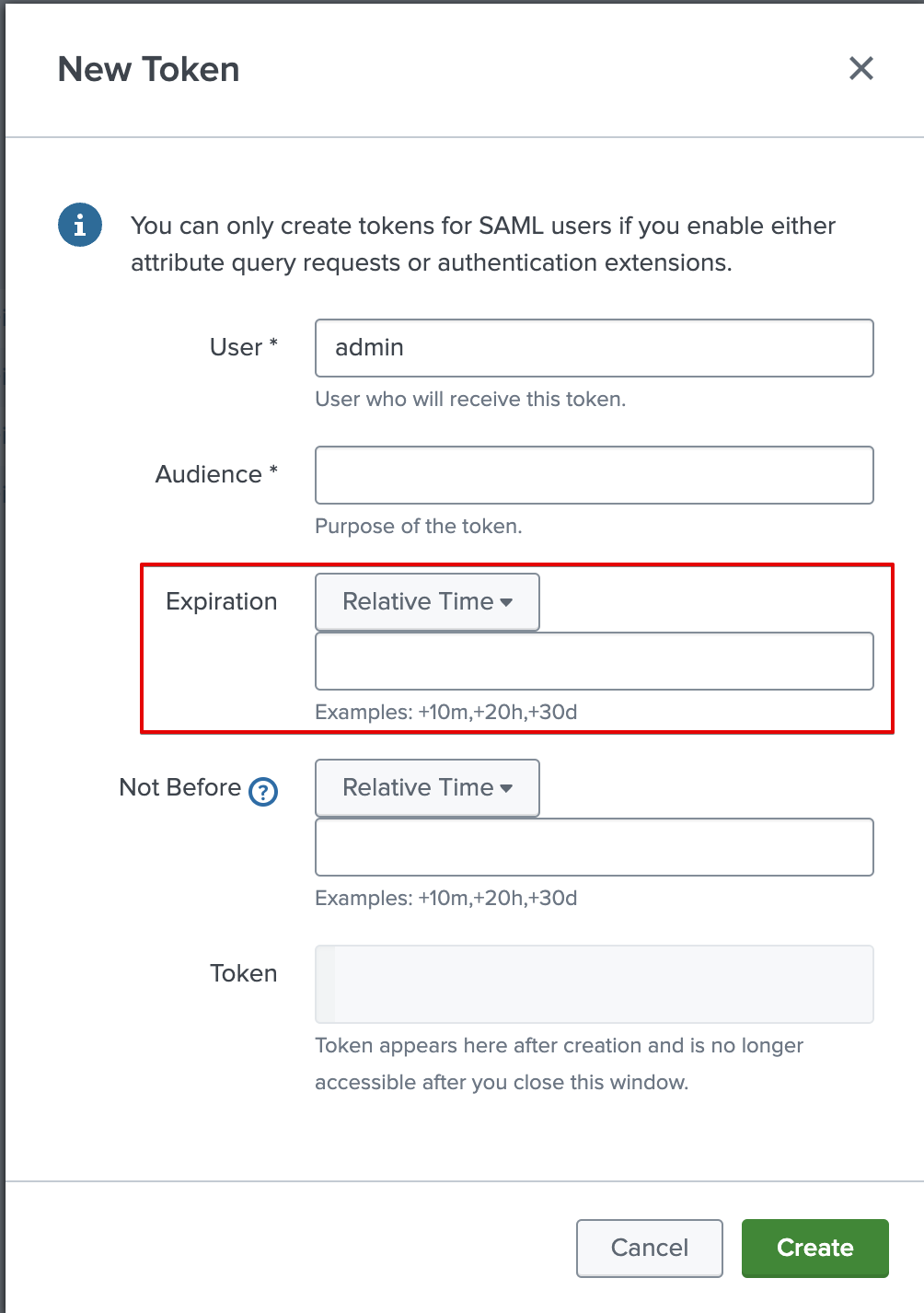
-
A new section with the token now appears in the dialog.
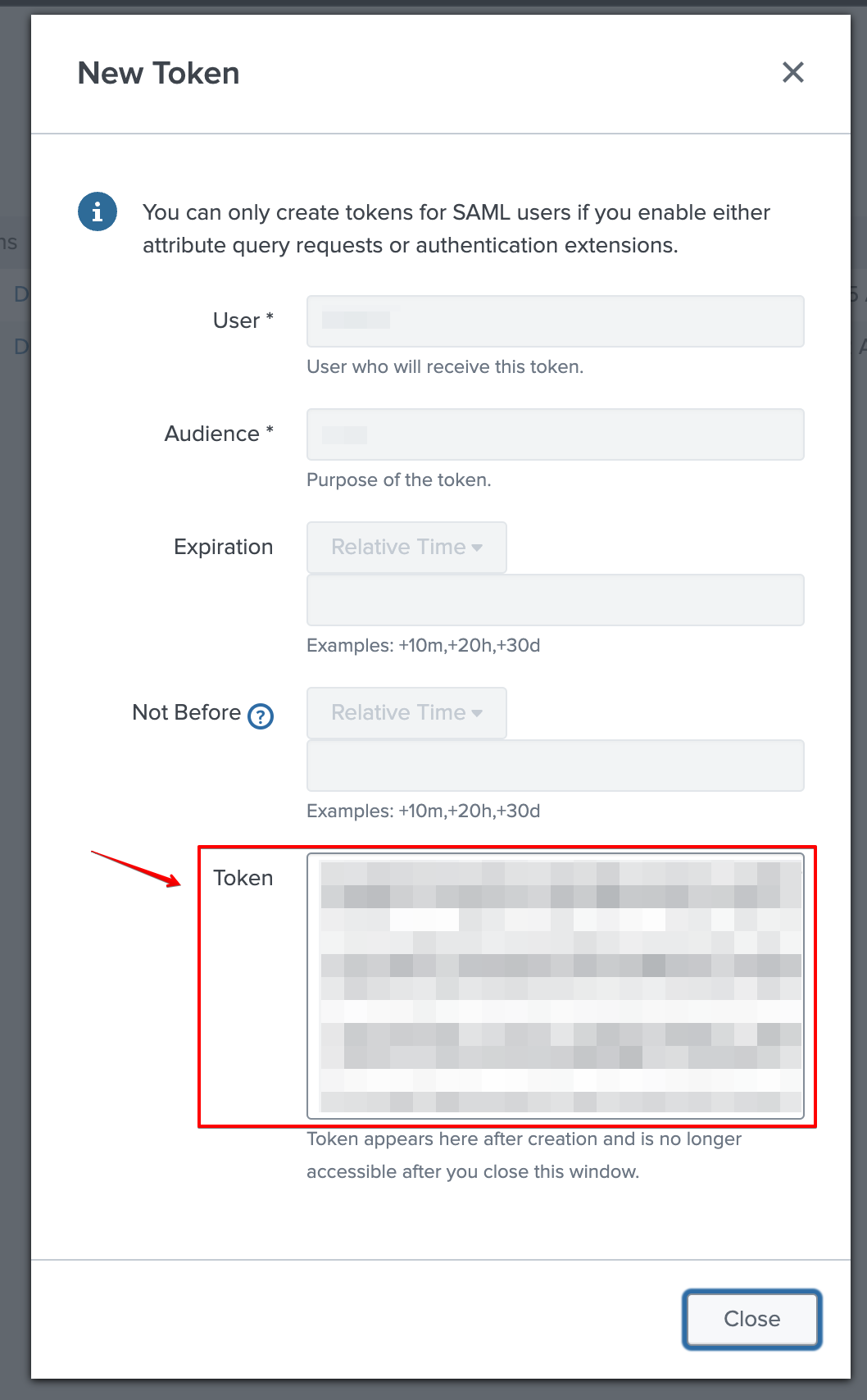
Creating your connection
- In the Blink platform, navigate to the Connections page > Add connection. A New Connection dialog box opens displaying icons of external service providers available.
- Select the Splunk icon. A dialog box with name of the connection and connection methods appear.
- (Optional) Edit the name of the connection. At a later stage you cannot edit the name.
- Select API Token as the method to create the connection.
-
Fill in the parameters:
- The Splunk Domain
- The Deployment API Port
- The API Token
- (Optional) Click Test Connection to test it.
- Click Create connection. The new connection appears on the Connections page.
Using Username and Password
To create the connection you need:- A Splunk Domain
- A Deployment API Port
- A Splunk Username
- A Splunk Password
Obtaining the credentials
- The username and password are the same as those with which you log on to your Splunk deployment.
For authentication, the username should be the portion of the email address
preceding the ”@” symbol, rather than the full email address.
Creating your connection
- In the Blink platform, navigate to the Connections page > Add connection. A New Connection dialog box opens displaying icons of external service providers available.
- Select the Splunk icon. A dialog box with name of the connection and connection methods appear.
- (Optional) Edit the name of the connection. At a later stage you cannot edit the name.
- Select Username & Password as the method to create the connection.
-
Fill in the parameters:
- The Splunk Domain
- The Deployment API Port
- The Splunk Username
- The Splunk Password
- (Optional) Click Test Connection to test it.
- Click Create connection. The new connection appears on the Connections page.
Using HTTP Event Token
To create the connection you need:- A Splunk Domain
- An Event Collector API Port
- An HTTP Event Collector Token
Obtaining the HTTP Event Collector Token
-
In the system bar, click Settings > Add Data.
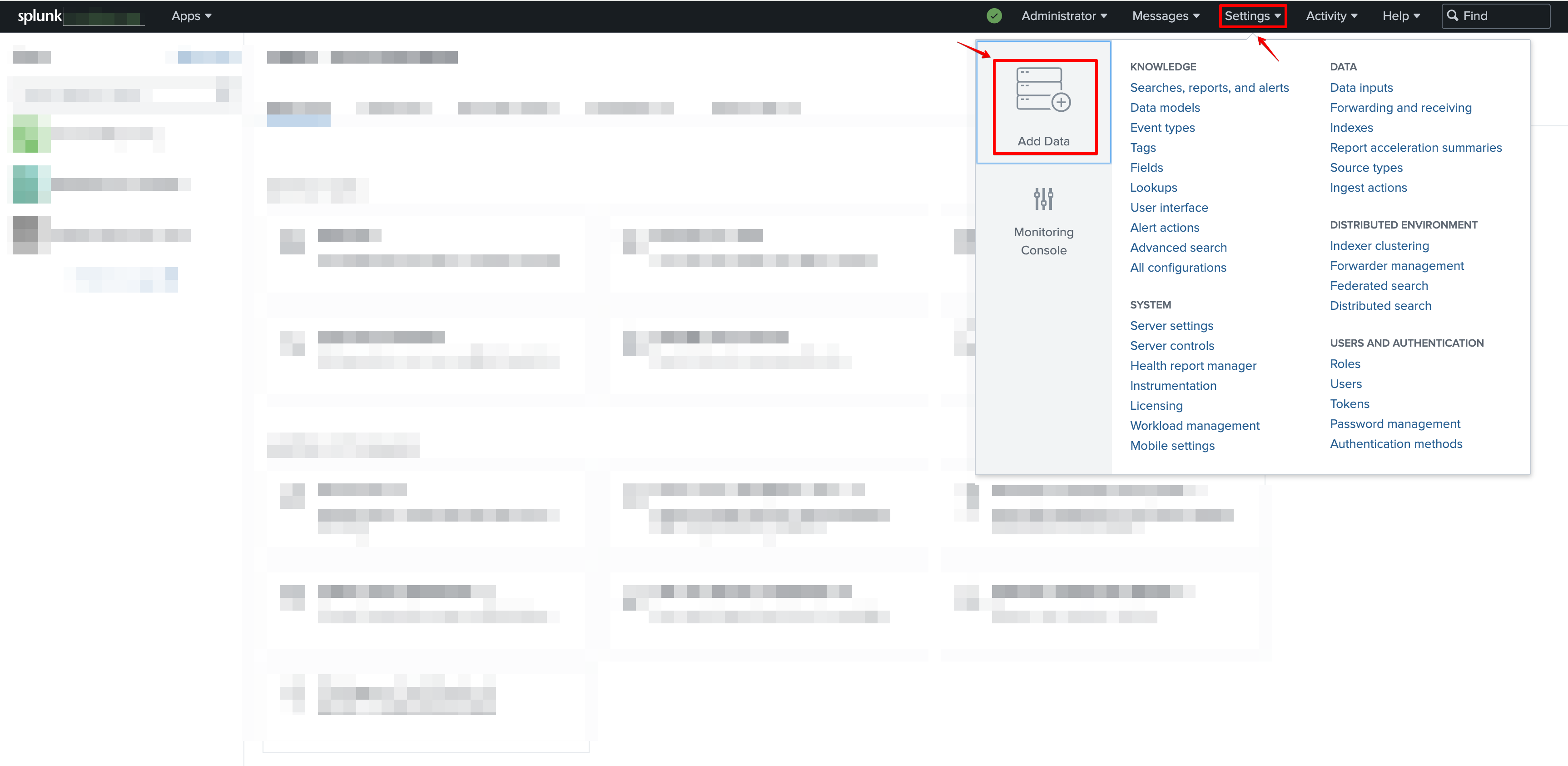
-
Click Monitor.
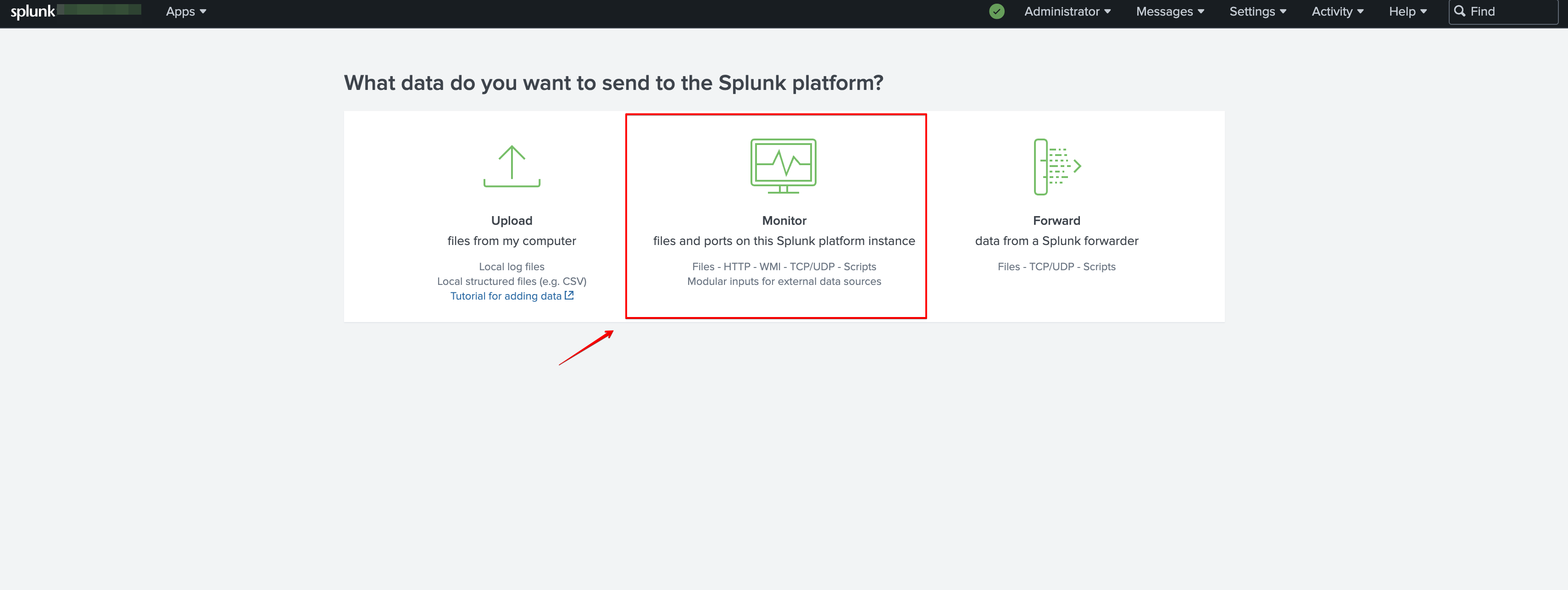
-
Click HTTP Event Collector.
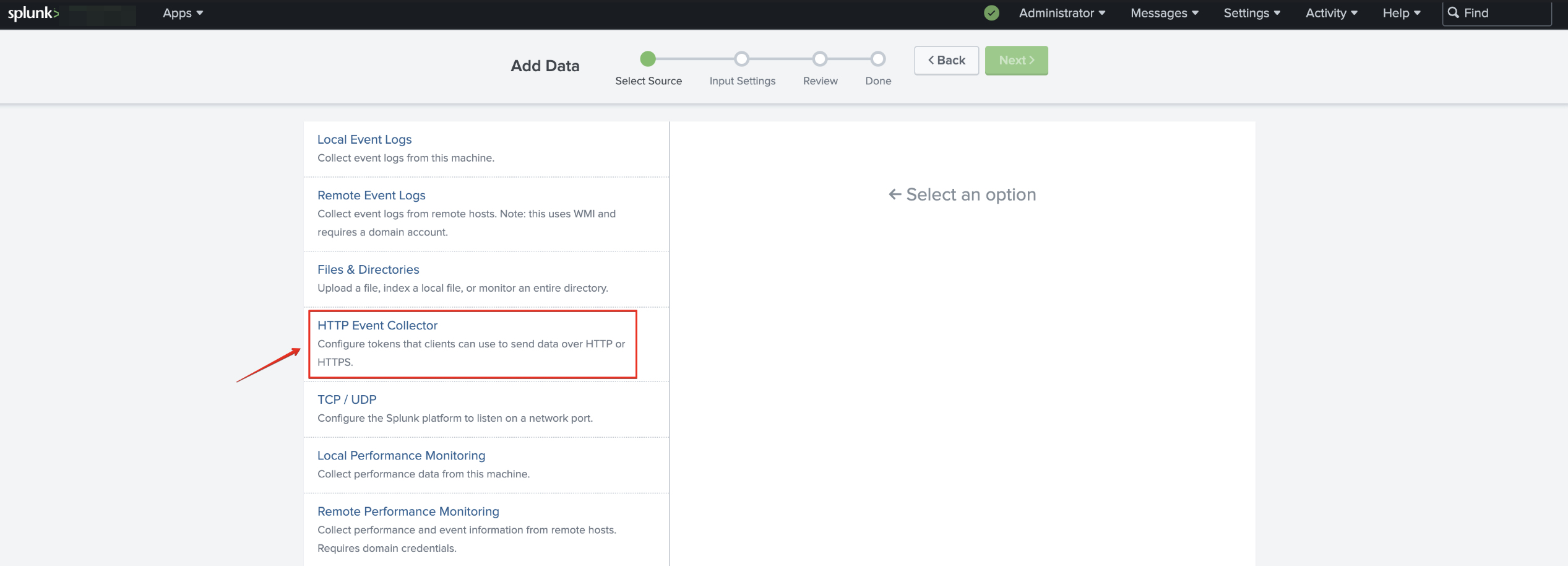
-
In the Name field, enter a name for the token (The remaining attributes are optional) > click Next.
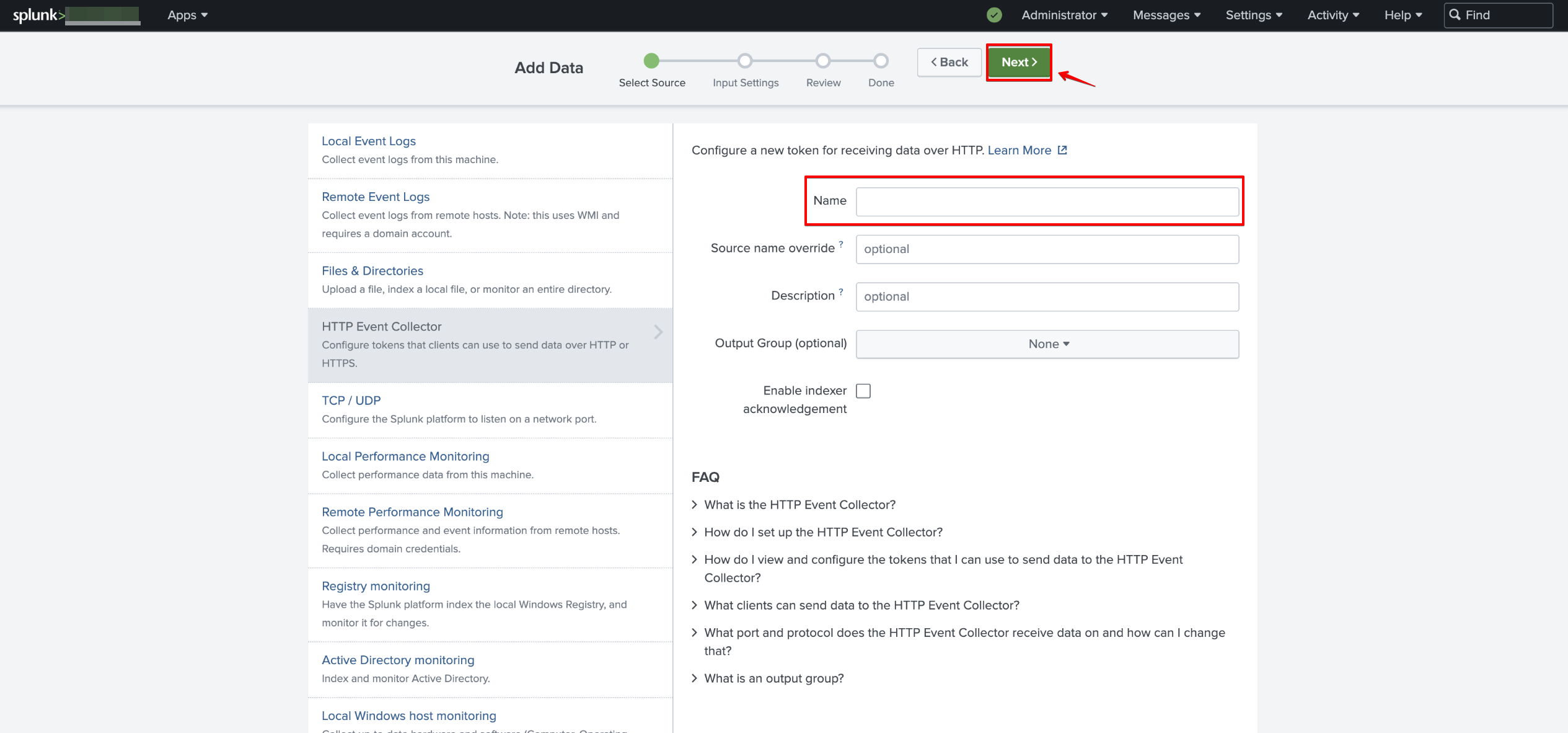
-
[Optional] Make edits to source type and confirm the index where you want HEC events to be stored. For more information, please refer to the Splunk documentation. Click Review.

-
Confirm your settings selections > click Submit.
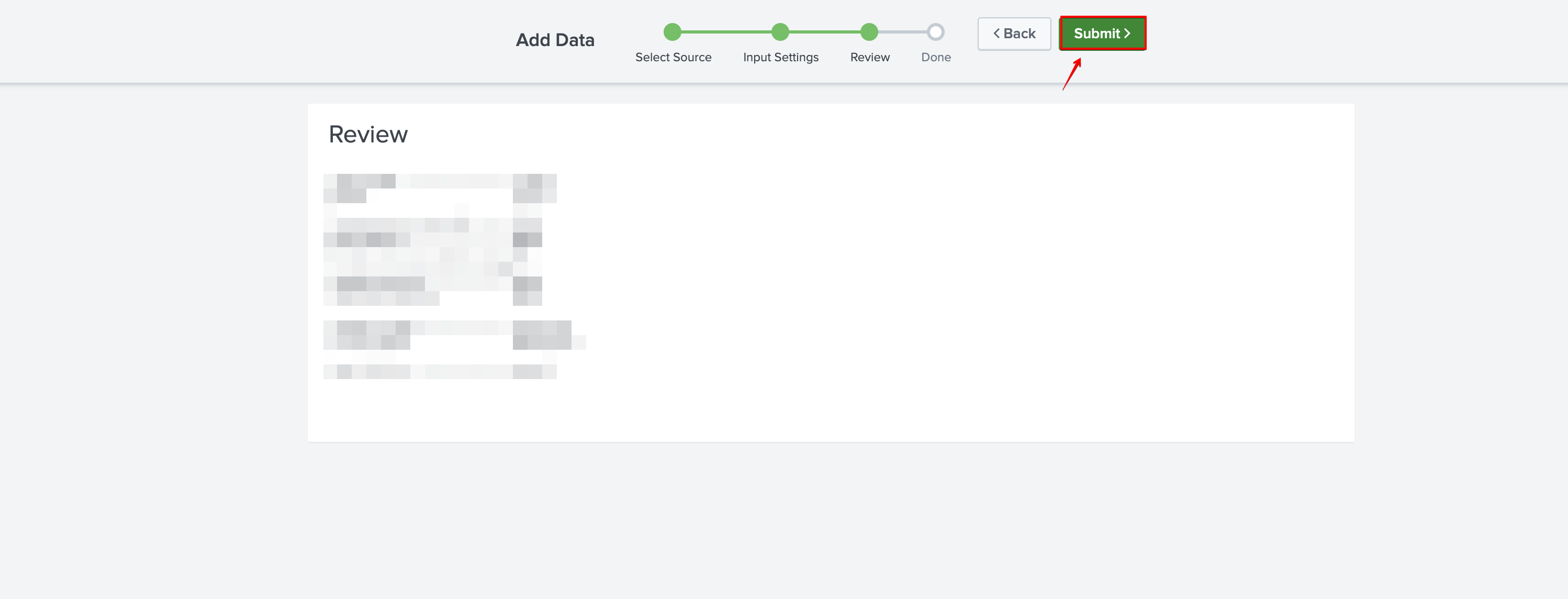
-
An HTTP Event Collector Token has been created.
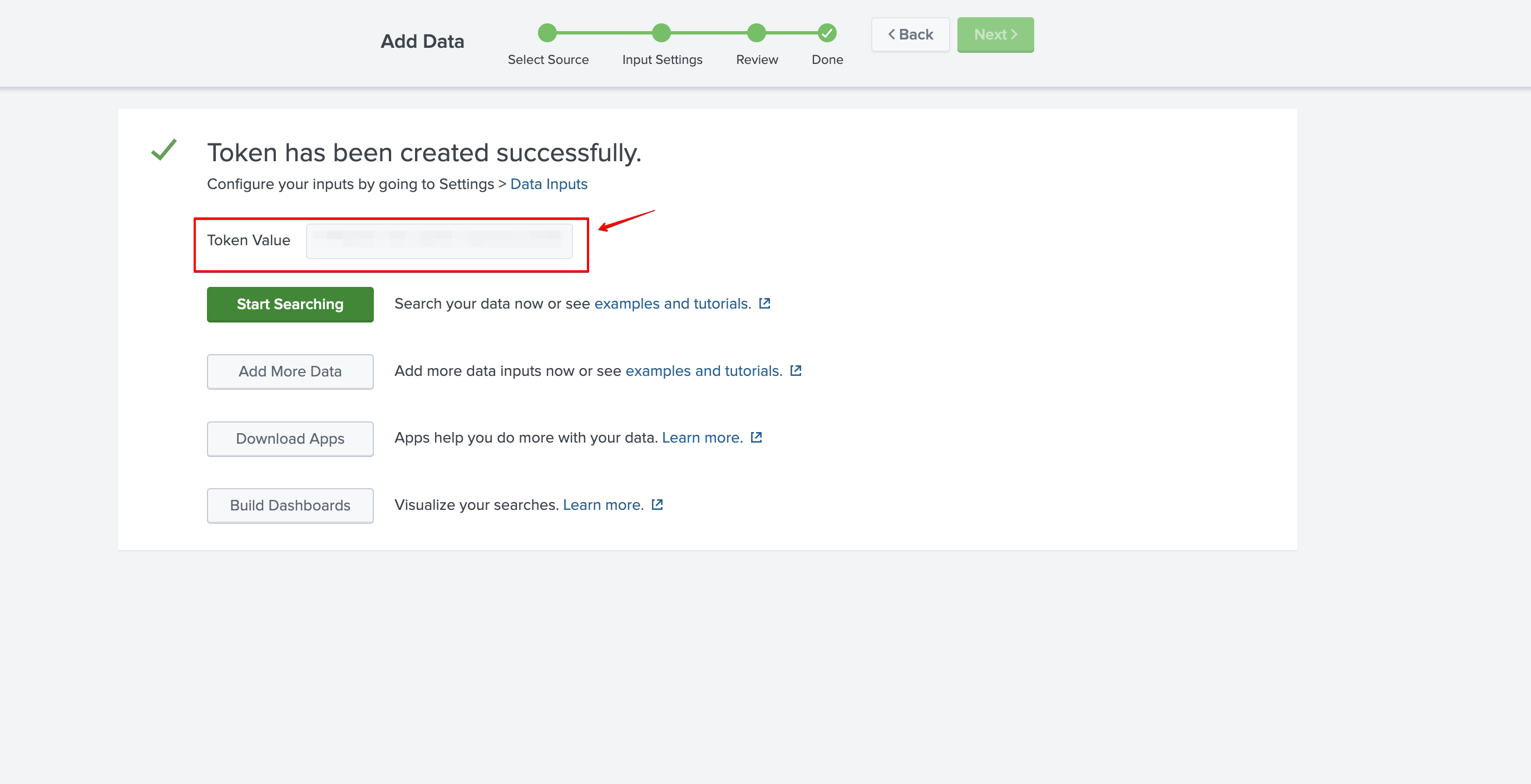
Enable the HTTP Event Collector Token
-
Click Settings > Data Inputs.

-
Click HTTP Event Collector.
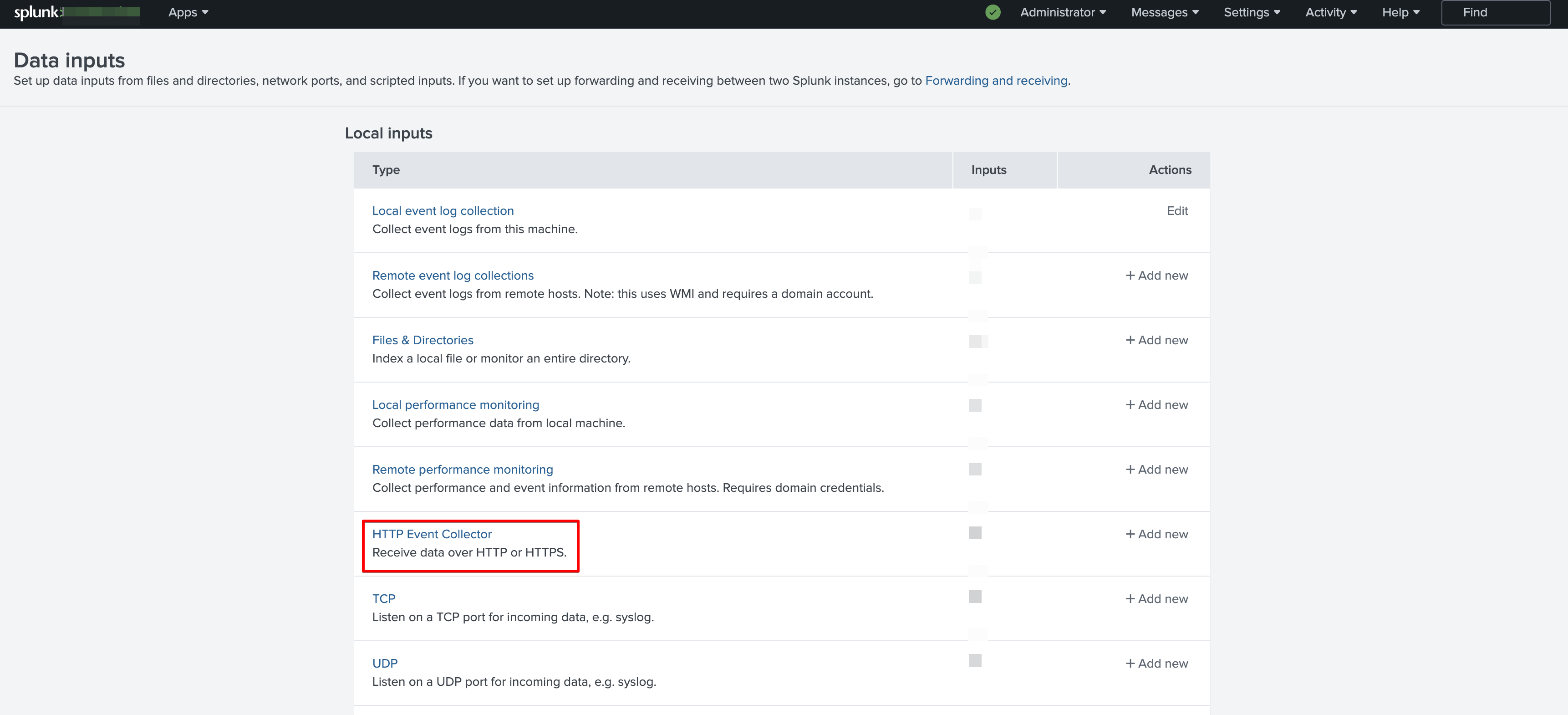
- For Splunk Cloud: In the Actions column for that token, click the Enable link. The token status toggles immediately and the link changes to Enable.
-
For Splunk Enterprise:
a. Click Global Settings.

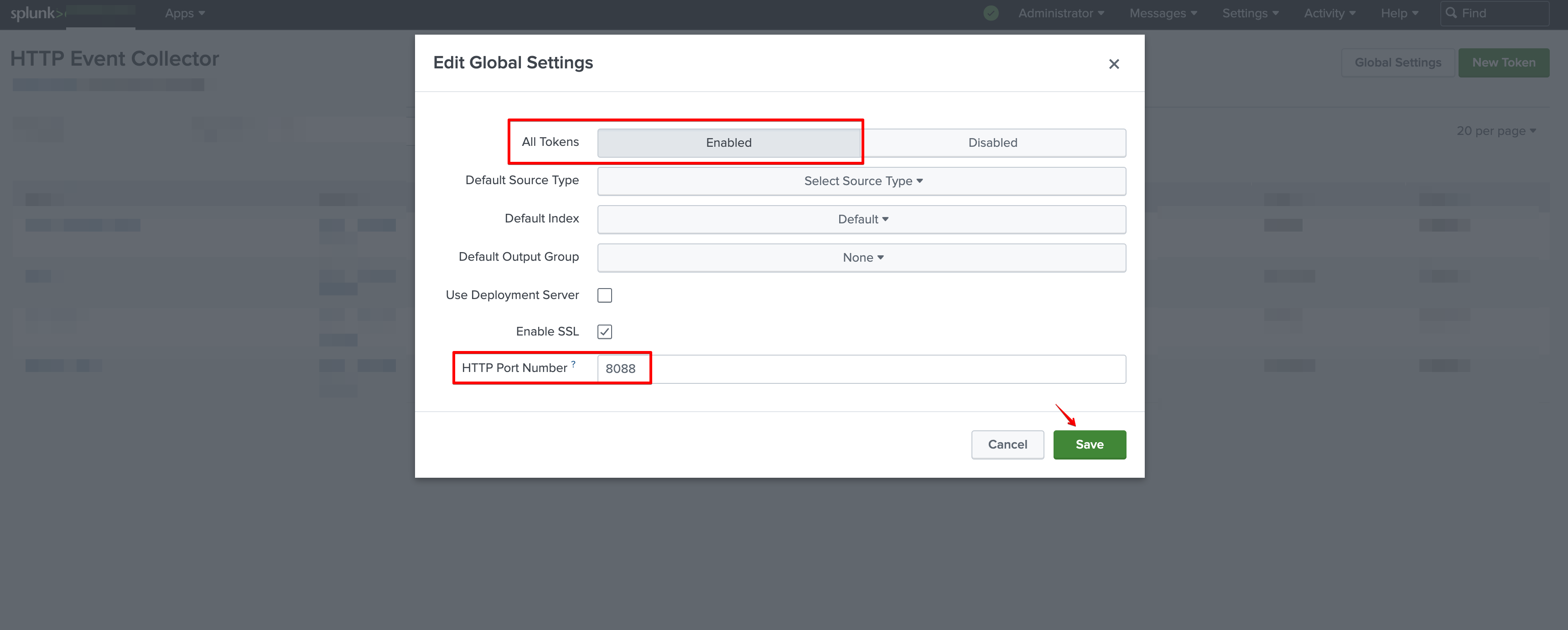
Creating your connection
- In the Blink platform, navigate to the Connections page > Add connection. A New Connection dialog box opens displaying icons of external service providers available.
- Select the Splunk icon. A dialog box with name of the connection and connection methods appear.
- (Optional) Edit the name of the connection. At a later stage you cannot edit the name.
- Select HTTP Event Token as the method to create the connection.
-
Fill in the parameters:
- The Splunk Domain
- The Event Collector API Port
- The HTTP Event Collector Token
- (Optional) Click Test Connection to test it.
- Click Create connection. The new connection appears on the Connections page.